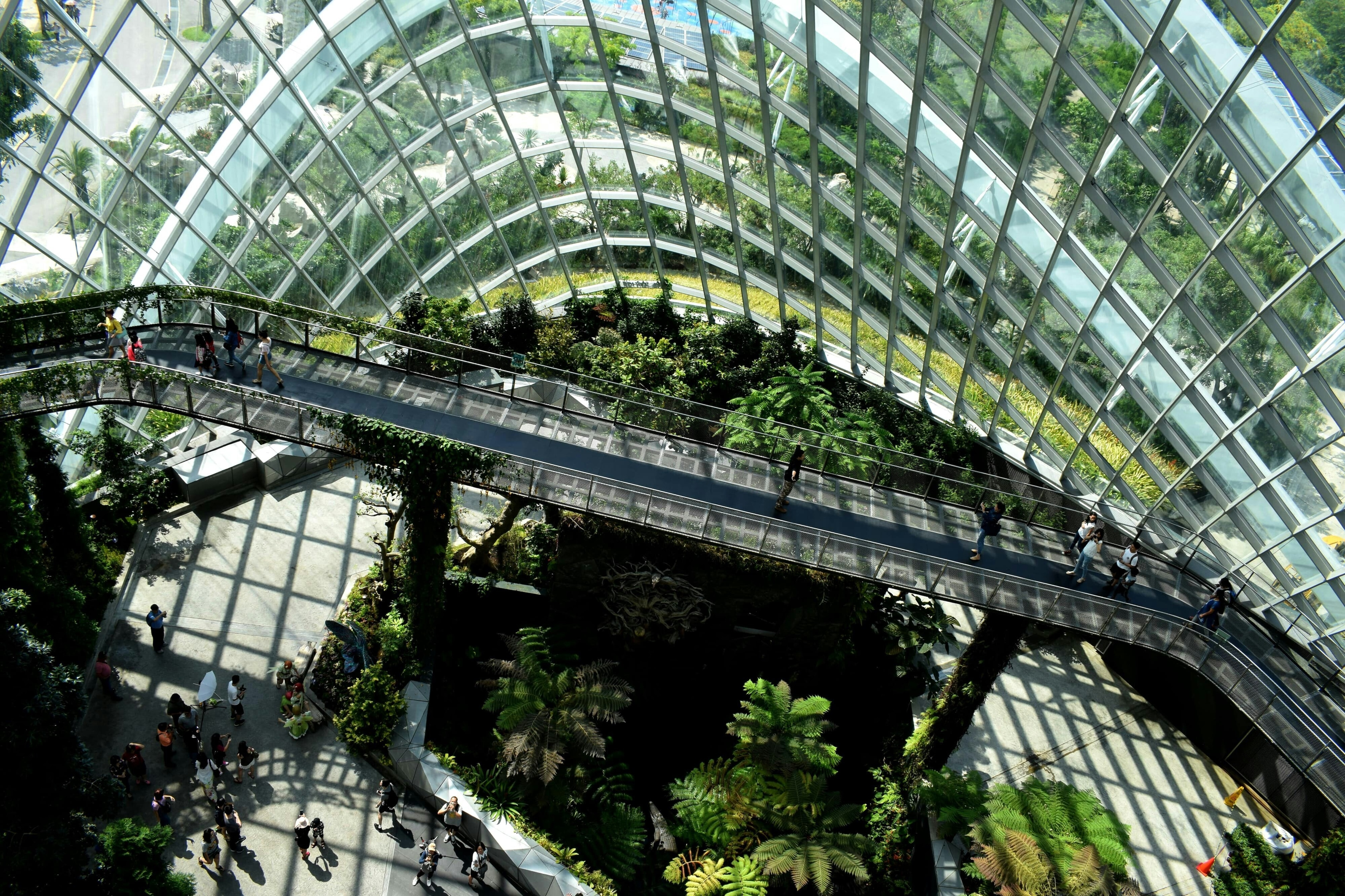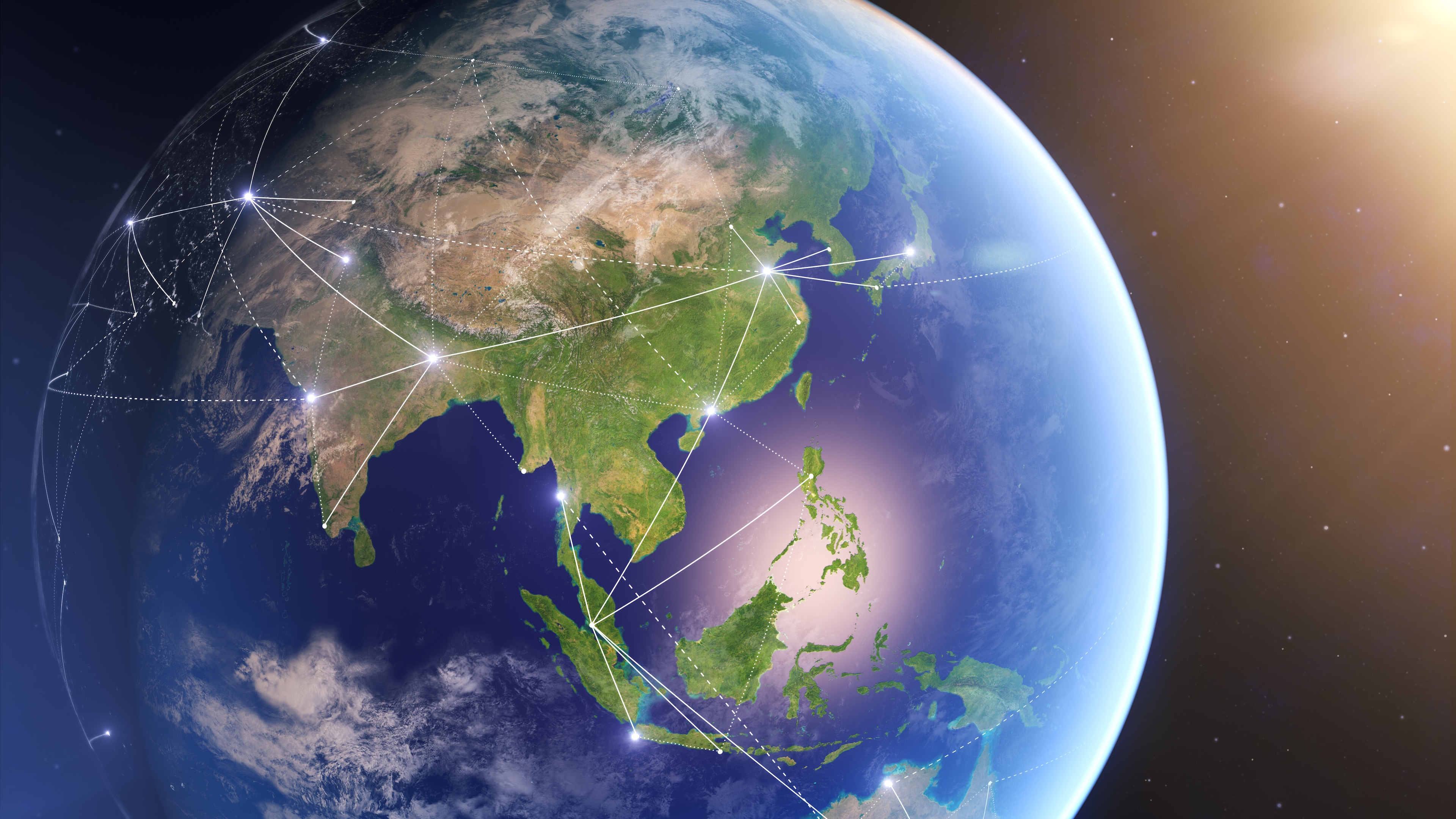Are you managing your time properly?

Stay up to date:
Future of Work
Republished with permission from Knowledge@Wharton, the online research and business analysis journal of the Wharton School of the University of Pennsylvania.
In today’s world, a common refrain is, “There is not enough time” — whether to complete a task or to take time for ourselves or to be with our families. But Google’s Gopi Kallayil emphatically disagrees with that idea. In The Internet to the Inner-Net: Five Ways to Reset Your Connection and Live a Conscious Life, Kallayil shares how he has come to use his brain, body and consciousness to gain control of his perception of time and his choices about how to use it.
Kallayil recently spoke with Knowledge@Wharton about his new book and how to live a life with more purpose and fulfillment.
An edited transcript of the conversation follows.
Knowledge@Wharton: Gopi, please start with the title of your book: The Internet to the Inner-Net. What exactly is the “inner-net,” and what is its connection to the Internet?
Kallayil: Let’s start with the Internet. The Internet obviously is one of the biggest forces created by humankind in terms of technology in recent times. [It] has touched our lives in so many different ways. We are all well aware of it, and we are quite enamored by this technology. But in the midst of all this, the most important technology that is accessible to every single human being is what is inside ourselves….I refer to it as a technology, just to use a parallel framework, because it is still one of the most complex, highly functioning systems that we know of: this combination of our brain and our body and our breath, our consciousness. It’s a playful use of those two words, the Internet and the inner-net. In a way, it is still a networked system that is inside of us, that makes us function and think and come up with all this creative stuff. That is the origin of the title. What I’m really trying to explore here is how you manage those inner technologies in order to function well in this world, even as we deal with all of these outer technologies that the Internet encompasses.
Knowledge@Wharton: In some respects, the inner-net is something that probably has been a very important [aspect of] business success over the years, but maybe something that is really being looked at a lot closer in the last few years because of the digital age that we are in?
Kallayil: Everything that we experience in life and everything that comes as a creative output from humans is in some ways preceded by, or is a function of, your inner-net. In terms of experiences that we go through, whether it’s a little piece of food we eat or somebody listening to this conversation and trying to make sense of it, or a great thought leadership piece that’s come from a Knowledge@Wharton writer, all of that has to be preceded by our brain and eyes and our ears and this inner set of highly functioning technology. In the same way, whether it’s the miracle of all of smartphone technology or aircraft or a great idea on Wall Street, it is produced by somebody’s inner-net. It’s a creative output of some person. So that piece of inner technology, or the inner-net, is really what powers human innovation, creativity and what has driven us forward.
“On my way to work every single day, I think of ten things I am grateful for. It is just to shift our attention from problems or the things that give us stress, to the things that are working well, the things that you can be grateful for….”
Knowledge@Wharton: In the introduction to your book, Pico Iyer, who is the author of The Art of Stillness and many other books, writes that “technology is less important than the inner resources we bring to it.” I wonder what your thinking is on that idea.
Kallayil: The way that technology can be used or misused is a big function of the person who is [using] the technology. A simple analogy I always like to use is fire. Fire is an innovation or a discovery. It’s a natural force that has been available to human beings. It’s an extremely useful natural force in that it can melt steel, it can cook your food, you can blow glass with it. But if you don’t use it with care, you could burn yourself or you could burn an entire city down. In the same way, all these technologies have amazing power, and what you are going to do with it is really a function of the person who is using the technology….
Knowledge@Wharton: Tell us a little bit about your story, where this book is concerned, and how it helped you put the book together?
Kallayil: It has been, in many ways, an accidental personal journey…. Steve Jobs says you can only connect all the dots when you look back on your life, when you look into the rearview mirror. If I look at my own journey, there have been two paths to it. One is professional life, where I’ve been to engineering school and … went to Wharton, and pursued an active, successful career in Silicon Valley. At this point, it is at Google. Even as I was doing all this, given the cultural accident of my birth, the fact that I was born and raised in India, I was surrounded by the signs of the inner technology — the wisdom traditions like yoga, meditation, et cetera, which in a natural way fell into my life. I don’t think I pursued them. In a way, I thought they would all get interlinked and connected later on in life. They were just two separate interests, passions and sometimes accidental discoveries that were coursing together…. With the extreme amount of interest in America and the rest of the world in practices like yoga and mindfulness and meditation, they converged in my personal life in a pretty remarkable way, and they have been the source of both … a high-quality, high-functioning life, as well as, more importantly, a life of joy and fulfillment and thriving in this world. Those wisdom traditions that have been with us for 2,600 years seem to have given a lot of tools that allow me to deal with the day-to-day pressures of all of the information and the demands on my life that are brought by the Internet. This book really is that personal journey, the rituals I have developed and what works for me. I wanted to share that with my readers.
Knowledge@Wharton: I have a question about those rituals and strategies that you have created in your own life to find stillness. You’re right that for the inner-net to operate at peak performance, it needs periods of quiet. Could you share the strategies that you have used to create quietness and stillness in your twenty-four-seven life?
Kallayil: It can vary from something a little more involved, like a proper meditation session. It could last 10 minutes or 20 minutes or half an hour — as much time as I need. Or, [it could be] a yoga practice where I get on the mat and do it. Those are part of my core practices when I drop out, and I’m not using a phone or a computer or looking at anything, not being distracted. I am more centered with mostly my eyes closed and just the sound of my breathing to accompany me, or other modalities … like chanting a certain meditation mantra, if I’m doing meditation, or practicing the yoga flow and the postures and holding them in a certain way and breathing. When I do those practices, then I disconnect. I unplug from the Internet, and when I say Internet, I mean it in the broader sense of the word, with all of the technologies, the information, the distraction. I plug into my inner-net. That is a time for me to go inward and friend myself and reconnect with myself. But even if you don’t have any of those practices, there are a lot more simple ways that I talk about in the book that are accessible to everyone.
Let me talk about two of them. One is a simple gratitude practice. On my way to work every single day, I think of ten things I am grateful for. It is just to shift our attention from problems or the things that give us stress, to the things that are working well, the things that you can be grateful for, whether it’s your health or the fact that you have food to eat or your family or your friends or what you do for a living. There are many, many things you can bring your attention to. We all have a list of ten things we can think of every single day.
Another simple practice that I talk about in this book that is also accessible to everyone [is how] you eat your food, your lunch and your dinner: Just do it with a little bit of attention and mindfulness, as opposed to simultaneously trying to answer email or watching TV. If you just take the few minutes to bring your whole attention to what you are putting into your mouth and the tastes and the flavors and the smell, you will enjoy your food, digest it better and probably eat less because you’re eating very consciously. But in the process, you just take a few seconds to, again, drop into the personal moment, drop into your inner-net. In the book, I go through very, very simple, easy-to-practice rituals like that, all the way to other practices that need a little bit more study and longer years of trying, like yoga and meditation, that work very well for me.
Knowledge@Wharton: For a lot of people, it has to be a battle to try and do those things in the course of a day, because of the fact that we are so connected to email and to texting and to searching content online.
Kallayil: It can be a battle. Or it can be this fun, conscious choice — that I have the power to choose to disengage when I need to and drop into myself. You can even take windows of as little as one minute to do so. It is available. But I think that choice is available for all of us who are discerning, intelligent human beings. It only becomes a battle if you let go of that control, and you become a slave to this technology….
“There are 24 hours…. It’s a question of what do you do with that 1,440 minutes in a day that then determines how stressed you are about it or how you go through your life….”
Knowledge@Wharton: You talked about yoga a couple of times, so I have a question. What exactly is a “yogler”? What can you tell us about how yoga is helping people at Google live a conscious life?
Kallayil: At Google, there are communities of Googlers who have different special interests. If you just joined Google recently, you’re called a noogler, and if you’ve been at Google for a very long time and now have a bit of gray hair, you’re called a graygler. Gay Googlers are called gayglers, and the name that I really love and I thought most creative is the community of carpooling Googlers called carpooglers….
It is in that spirit that when I started at the company nine years ago, and I started teaching yoga there, I gave that yoga practicing community [the name] yoglers. The yoglers are yoga-practicing Googlers. Within the practice of the physical hatha yoga practice itself, if I look at the Mountain View campus of Google, there are 37 classes offered every single week. This is not counting all the other offices. If you go to New York or Boston or San Francisco or London, you have yoga classes in those offices as well. So a lot of Googlers practice it. It is both a physical exercise as well as a mental, meditative practice. They take an hour, hour and 15 minutes away from their routine, and again, leave their computers and smart phones behind, and just form this connection with their bodies, with their inner technologies. It’s just [breathing] on a blue mat as they move together led by a Googler yoga instructor or by a professional external yoga instructor. It is a time to drop into ourselves and do that check in, which is extremely important for us to do on a regular basis as humans.
Knowledge@Wharton: In addition to yoga, you also write about the role of music in a conscious life. Can you tell us a little bit about how you’ve integrated music into your life?
Kallayil: I listen to a lot of music, and more recently, I picked it up as a performing art. I took lessons and I sing. In particular, there are many meditative music practices that, again, are designed to connect with the spirit.
There’s something about music. It is universal. That’s why in every culture, every part of the world, there is some tradition of music. Many of these traditions are designed to take us to a slightly different space, where we are calmer, happier, joyful and feel … a sense of oneness with all the other people that we might be singing with, if you’re doing something like congregational choir singing, for example. That’s why you hear music in churches, and you hear music in temples. There is one particular tradition that is a call-response tradition that comes out of India called Kirtan, that I have been listening to and singing along with for a long time. More recently, something opened up, something shifted, and I’ve become very attracted to it, and I started pursuing it more seriously. I actually came out with an album a couple of years ago called Kirtan Lounge. Even when I’m working and I’m trying to work in a focused manner, I might turn on some Kirtan music, and I do use the Internet to listen to the music because there is plenty available. I am using it as a resource, but it allows me to then cut away all of the other distractions and just zone in on what I’m trying to accomplish, particularly if it’s creative problem solving that I’m trying to do….
“The most important technology every single person gets to use every single day is inside of us — starting with our brain, starting with our breathing.”
Knowledge@Wharton: How much has that really centered you and balanced you and allowed you to be able to do your work at Google on a day-to-day basis?
Kallayil: I listen to it almost every day on the way to work. It’s my ritual, after I finish my gratitude practice, of course, to turn on some of the music. It just shifts me mentally and physically to be ready for anything that is thrown at me on a day-to-day basis. I can’t predict what will come toward me. All I know is there’s uncertainty. There’s new information or whatever, just a meeting or a conversation with a colleague or a client. [When I’m] not engaged with another person, I turn on music. I’ve got playlists in that particular genre. I put on my headset and just focus on what I need to get done. It just centers me and grounds me extremely well. Some people use classical music. Some people use jazz — but [listen to] whatever works for you, from a musical context. Some people don’t need any music….
Knowledge@Wharton: You’ve mentioned the use of music. You also earlier in our conversation talked about some of the strategies you use to create stillness in the midst of a busy life. Apart from these needs, there are also the other challenge that almost all of us face in our daily lives, that cause people to think they have no time. This seems to be a common condition, from harried executives on the one hand to, as you write in your book, farmers who till the fields who also say they are short of time. What techniques would you like to share with people to manage the time better?
Kallayil: It’s not an issue of lack of time. There is a physical law that applies to, again, every single human being that there are 24 hours…. That is what is allocated to every single being, every single day. It’s a question of what do you do with that 1,440 minutes in a day that then determines how stressed you are about it or how you go through your life in a state of joy and peace, which is the aspiration, which is the choice everyone would make if they could get to that point. One way in which I ask people to frame it is if you are eating sensible at a buffet. At a buffet, there is a lot of food available and plenty of choice and an enormous amount of portions available. If you are eating sensibly, you just pick from the buffet what nourishes you, what you need, and if you eat that, it’s good for you in that it sustains you, nourishes you. If you are reckless about it and try to eat everything at the buffet, it’s not going to serve you well. You’re going to damage your body and soon end up in a hospital if you overindulge. In a similar way, I tell people that if you try to do everything on your plate that you’re supposed to do, that you think other people want you to do, that you’re obliged to do, you are going up against the laws of physics….
Twenty-four hours is not enough. But if you flip the problem and say, let me work on the most important thing, the highest priority, and focus on that, and that can be done in 24 hours, then you change the problem. You look at it from a different angle. For the rest, you either let go or you get somebody else to do it or negotiate back with the person who asked you to do it and say, “I can’t get it done, but I’ll fit into the next 24 hours, tomorrow, or three weeks from now.” Those are the kind of strategies. Again, it’s bringing a certain amount of peer thinking and consciousness to this problem, and not letting you be overwhelmed by it — and making those choices every single day, every single minute.
Knowledge@Wharton: Gopi, what is it that you would consider the most important lesson that you hope people will take away from The Internet to the Inner-Net?
Kallayil: The most important lesson I would tell them is that even as the world hurtles forward with all these amazing Internet-based technologies that are now available to us … it also can overwhelm us with so much information and with the rings and the beeps and the pings and the tweets and all the demands it seems to place on our attention. In the midst of all of this, one thing that has not changed is that the most important technology every single person gets to use every single day is inside of us — starting with our brain, starting with our breathing. The quality of our life is determined by the quality of how that technology functions, how that inner technology is optimized. How to do that has been available to us human beings, developed over the years, a set of great wisdom traditions. My main message is: Use those practices, use those traditions that are available, to manage your inner technologies and move them into a state of peak performance. Move them into a state of optimized performance that then allows you to live a conscious life of joy and fulfillment and high accomplishment, as we take advantage of these outer technologies, the Internet.
To keep up with the Agenda subscribe to our weekly newsletter.
Author: Gopi Kallayil is Google’s Chief Evangelist, Brand Marketing.
Image: A cup of tea is seen on an office table. REUTERS/Stefan Wermuth.
Don't miss any update on this topic
Create a free account and access your personalized content collection with our latest publications and analyses.
License and Republishing
World Economic Forum articles may be republished in accordance with the Creative Commons Attribution-NonCommercial-NoDerivatives 4.0 International Public License, and in accordance with our Terms of Use.
The views expressed in this article are those of the author alone and not the World Economic Forum.
Related topics:
Forum Stories newsletter
Bringing you weekly curated insights and analysis on the global issues that matter.
More on BusinessSee all
Jan Oliver Schwarz and Katharina Kleine
August 12, 2025
Elizabeth Henderson and Daniel Murphy
August 8, 2025
António Costa
August 6, 2025
Mauro Gianni and Isidora Kosta
August 4, 2025
Charlotte Degot
August 4, 2025
Li Dongsheng
July 31, 2025





